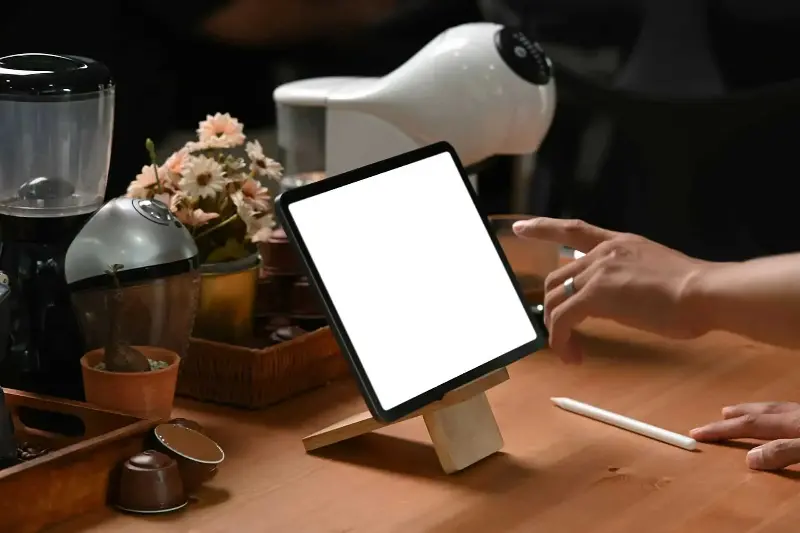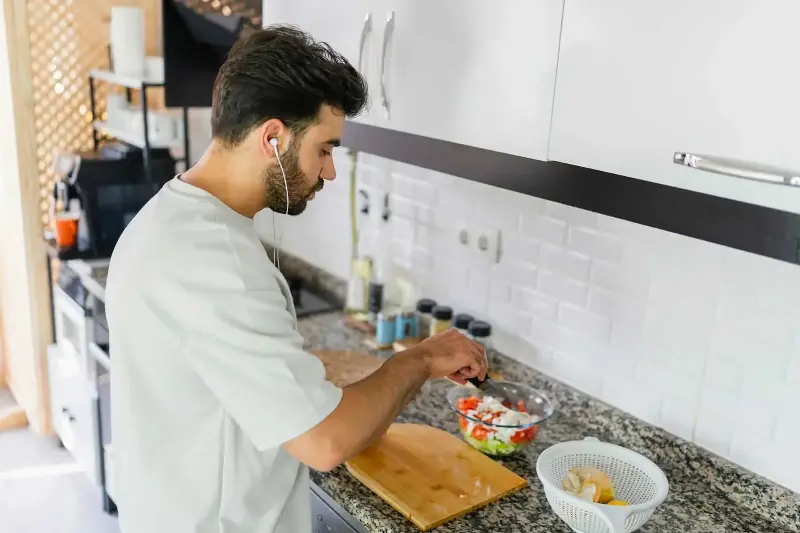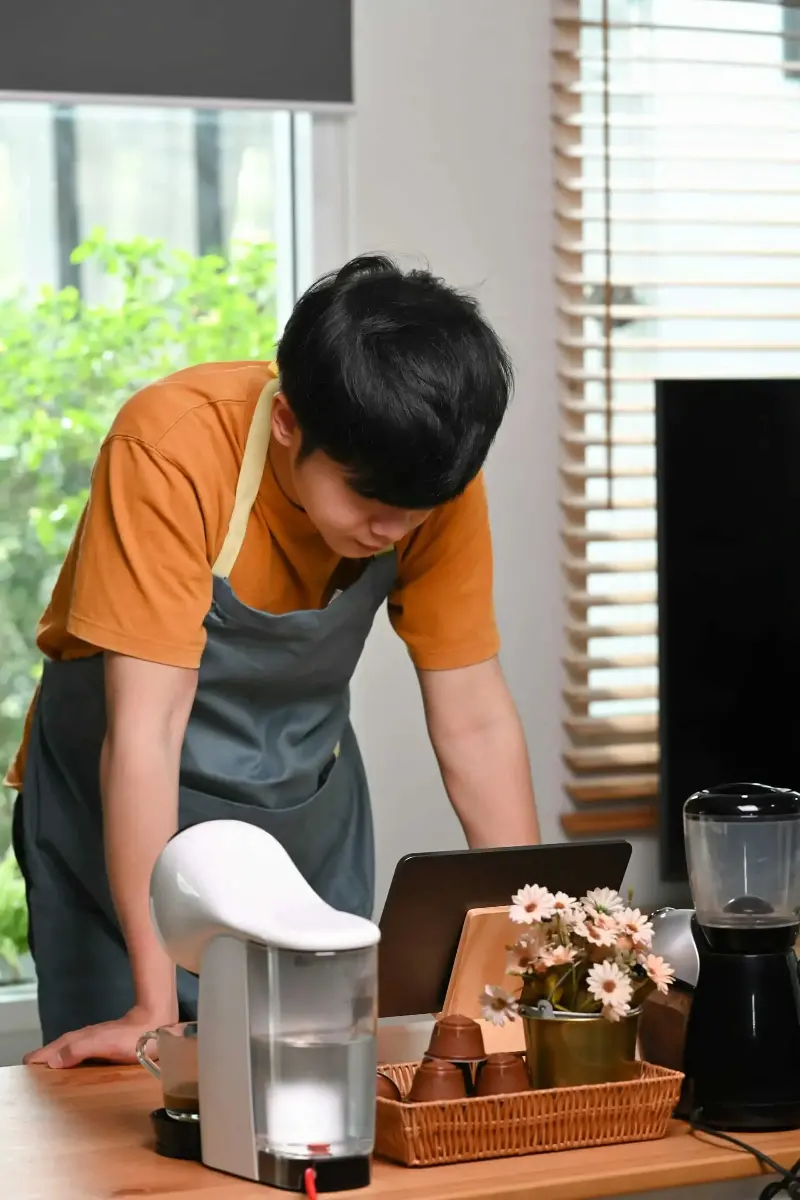
THERE’S SOMETHING ODDLY COMFORTING about asking a machine what to make for dinner.
At first glance, ChatGPT might seem like just another digital assistant, spitting out recipes and substitutions like a smarter, sassier version of Google Search. But under its apron hides a remarkable capability: a highly adaptive, context-sensitive, multilingual culinary coach—if, and only if, you know how to use it properly.
Whether you’re a home cook attempting Thai curry for the first time, a meal-prep nerd seeking macros by ingredient, or a sleep-deprived parent staring at three ingredients and a deadline—you’re probably not squeezing everything you could out of this tech.
We went beyond the basic “what’s a good dinner recipe?” prompts to test how ChatGPT and its generative cousins can change how you cook, shop, and eat. Here’s what we found.
1. Build-A-Recipe: When You’re Missing a Few Marbles (or Mushrooms)
The Use Case:
You’ve got a mishmash of ingredients—three eggs, a wilting courgette, and some rogue feta. Most recipe websites will leave you stranded.
The GPT Edge:
ChatGPT can reverse engineer recipes from your fridge contents, factoring in dietary restrictions, prep time, even your spice tolerance if you tell it. Crucially, it can adjust flavour profiles based on what cuisine you’re craving. And unlike static recipe databases, it understands constraints (“no oven,” “kid-friendly,” “one pot only”) in natural language.
Power Prompt:
"Make me a vegetarian dinner using only three eggs, courgette, feta, and pantry basics. One pan. No baking. Mediterranean flavour profile."
Pro Tip:
Ask for three variations—one quick, one with richer flavour depth, one slightly experimental (e.g. baked fritters with lemon tahini). You’ll be surprised how creative it can get.
2. Technique Breakdown: It Can Explain a Roux Like a Michelin Chef
The Use Case:
Need to understand what it really means to brown butter, or how to deglaze a pan without ruining your dinner?
The GPT Edge:
Unlike recipe blogs that assume you already know the difference between sautéing and sweating, GPT can explain techniques at your level. Want it in 200 words? Or like you’re a five-year-old? Or compared to your last failed attempt? Just ask.
Power Prompt:
"Explain how to make a dark roux for gumbo, including sensory cues like smell, colour, and texture. I’m an intermediate home cook who’s burnt it twice before."
Bonus Feature:
Follow up with:
"Can you quiz me with five multiple-choice questions to test if I’ve understood this correctly?"
It will oblige, turning your solo kitchen session into an interactive cooking class.
3. Hyper-Personal Meal Planning—Macros, Moods, and Menus
The Use Case:
Planning a week’s worth of meals for two adults and a child, with one gluten allergy, a preference for Japanese lunches, and a goal of reducing grocery waste? Good luck finding that on Pinterest.
The GPT Edge:
ChatGPT can plan meals to exacting briefs. It can rotate proteins, avoid allergen crossovers, generate consolidated shopping lists grouped by store aisle, and even flag when leftovers can be reused.
Power Prompt:
"Create a five-day dinner meal plan for two adults (one gluten-free, one pescatarian) and a 7-year-old. Meals should be under 35 minutes and avoid repeat ingredients. Include a Sunday batch-cook option and minimise food waste."
Add-On:
Follow up with:
"Now turn that plan into a Google Sheets-compatible grocery list."
It’ll format it as a CSV or Markdown table you can paste directly.

4. Training Mode: GPT as Your Culinary Coach
The Use Case:
You want to level up—maybe by mastering classic sauces or improving knife skills—but don’t know where to begin.
The GPT Edge:
Set it up as a guided mentor. It can build learning paths, from beginner to advanced, paced weekly. It’ll offer exercises, recipe challenges, and track your progress if you recap your practice.
Power Prompt:
"Create a 4-week training plan to help me master the five French mother sauces. Include reading material, practice recipes, flavour theory, and a quiz per week."
Pro-Level Prompt:
"Simulate a cooking instructor: quiz me on béchamel faults, ask me to correct mistakes, and escalate difficulty if I answer correctly."
This is where GPT shines beyond static media. It’s Socratic and endlessly patient.
5. Cultural Context & Food Anthropology: Not Just How, But Why
The Use Case:
Ever wondered why khichdi is made differently in Gujarat versus Bengal? Or what makes authentic Sichuan hotpot so numbing?
The GPT Edge:
GPT-4 and 4o models pull from wide corpora—food history, regional cookbooks, anthropological texts. Ask it to compare traditions, trace colonial influences, or decode etymology, and it responds with journalistic detail.
Power Prompt:
"Explain the regional variations of khichdi across India and how climate, migration, and caste shaped each version."
Reality Check:
GPT is strong here—but not infallible. For serious food anthropology, triangulate responses with resources like Oxford Companion to Food, JSTOR, or culinary historian-authored books.

6. Ingredient Intelligence: When Google Is Too Superficial
The Use Case:
Can I substitute silken tofu for eggs in baking? What does asafoetida actually do in Indian cooking?
The GPT Edge:
GPT understands ingredient chemistry, cultural usage, and flavour pairing. Better still—it can simulate what will happen if you substitute.
Power Prompt:
"If I replace eggs with silken tofu in this banana bread recipe, how will the texture, rise, and flavour be affected? I’m baking at sea level."
Better Than GPT?
For precise food chemistry, ChefSteps and Serious Eats offer more rigorously tested results. YouTube channels like America’s Test Kitchen or Pro Home Cooks can sometimes visualise what GPT explains.
But ChatGPT wins when you want instant answers plus context tailored to your situation.
7. Voice + Vision: When GPT Meets Tools That Do More
The Use Case:
You want GPT to see your pantry or hear your cooking process. It’s coming—sort of.
Try These Hybrid Hacks:
- Use ChatGPT + Smartphone Camera — With GPT-4o and Vision enabled (on ChatGPT Plus), you can upload photos of your fridge, grocery receipts, or a half-cooked dish and ask for analysis or suggestions.
- Pair GPT with a Smart Speaker — If you use GPT via mobile, or connect it with Siri Shortcuts or Android routines, it can read aloud recipe steps, take spoken questions mid-cooking, or set timers with context.
- Combine with Notion AI or Tana AI for tracking meals, ingredients, or rotating menus week-on-week.
Where GPT Lags (For Now):
- No live temperature/time monitoring (unlike apps like Meater or Joule).
- No instant OCR for handwritten recipes—yet.
- Still text-based at core, so no video instructions.
For these gaps, apps like SideChef, NYT Cooking, and Whisk are better equipped.
8. Prompt Library for Real Life
Keep these ready-to-use prompts in your back pocket:
- "Turn this family recipe into a vegan version without processed substitutes."
- "Explain mise en place like I’m a 12-year-old."
- "Simulate a pressure test: I have 30 minutes to make an impressive dinner with no stove."
- "Convert this Ottolenghi recipe into one using only Indian supermarket staples."
- "Generate a voice-friendly step-by-step cooking script for my phone assistant."
FINAL WORD: THE HUMAN FLAVOUR FACTOR
ChatGPT won’t dice your onions, catch your burning garlic, or taste your sauce for acid balance. But it’s a force multiplier—an always-on, judgement-free mentor, idea bank, and explainer that never gets tired or snarky.
The best part? It learns with you. The more you cook with it, the better it gets at helping you cook better.
But it’s not your grandmother’s cooking wisdom. It’s not sensory. And it’s still prone to hallucinating facts (especially in niche regional cuisines). So pair it with experience, intuition, and a generous spoon of curiosity.
Because in the end, great food is a dialogue. And now, your kitchen just got another voice in it.
